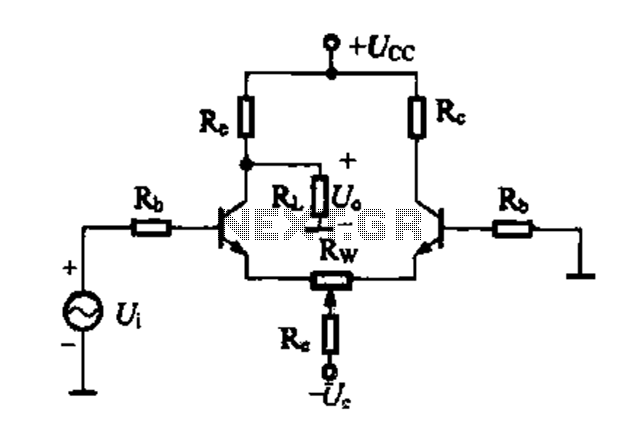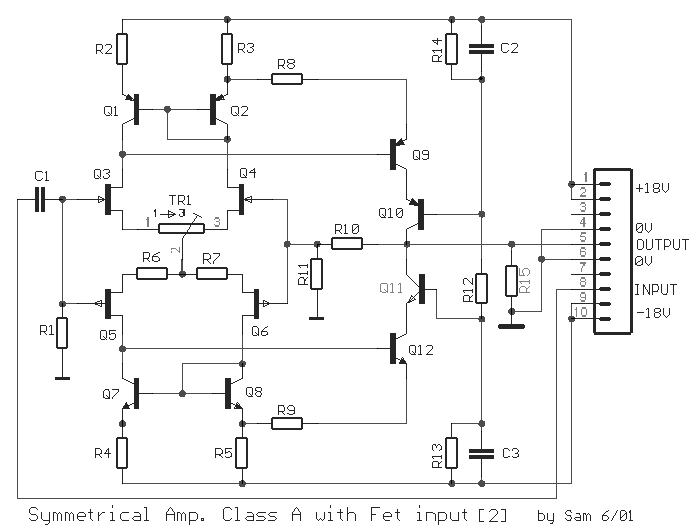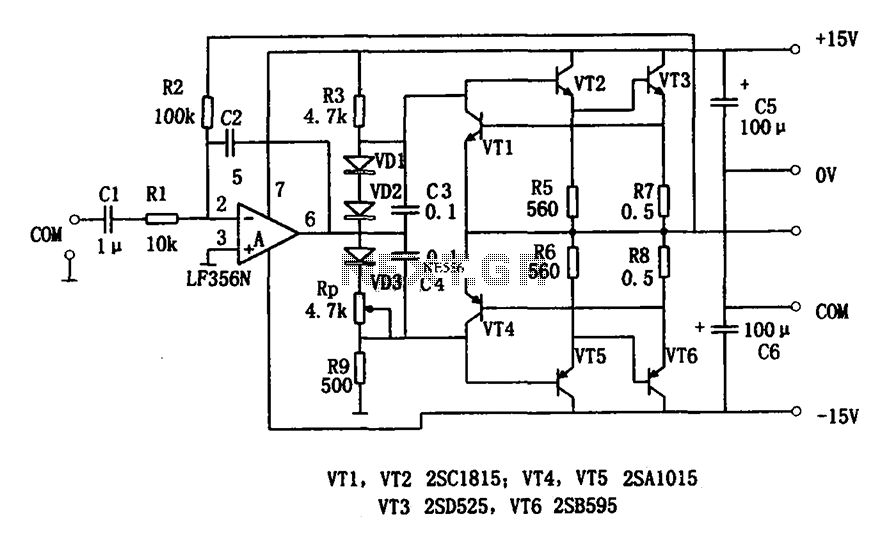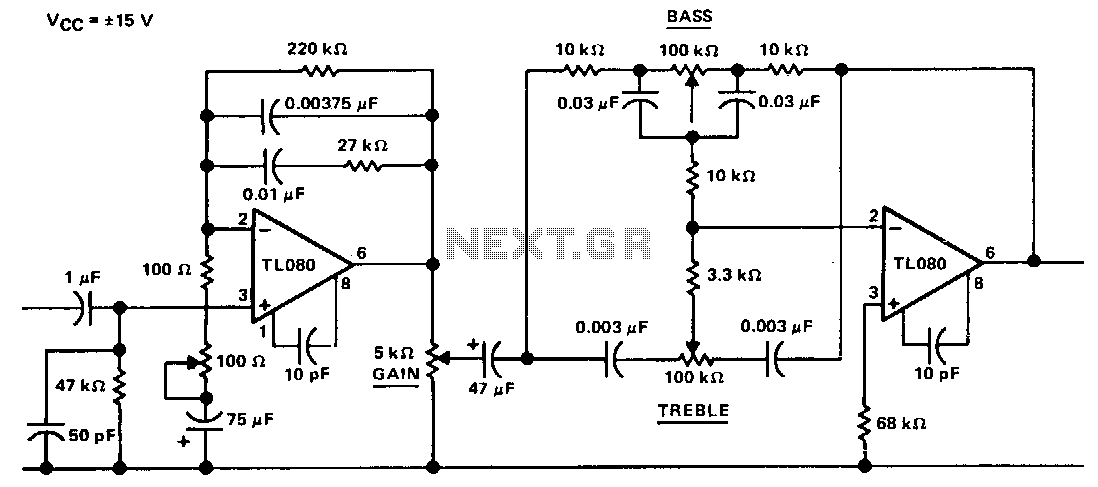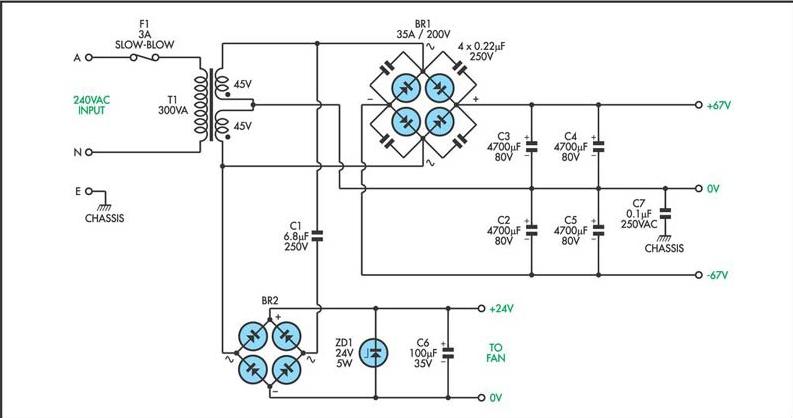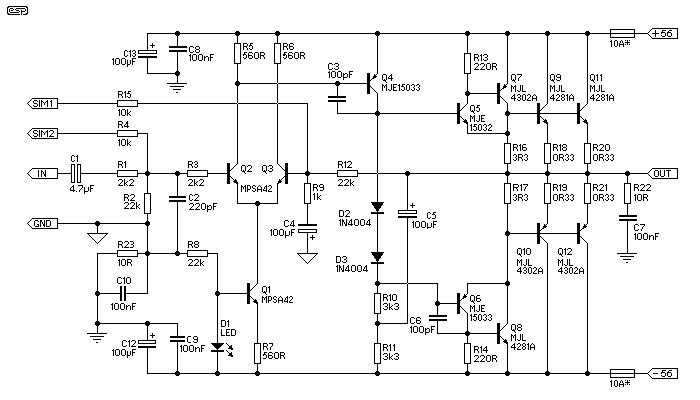
TDA2030 8w Amplifier
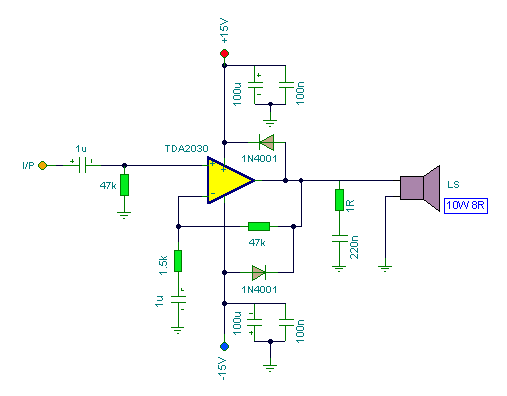
The TDA2030 is capable of delivering 20 watts of audio power; however, the output has been intentionally reduced to approximately 8 watts to drive 10-watt speakers, which is sufficient for smaller rooms. The input sensitivity is 200mV, and higher input levels will yield greater output without introducing distortion. The gain is determined by the 47k and 1.5k resistors. The TDA2030 integrated circuit is cost-effective and serves as a suitable replacement amplifier for low to medium audio power systems. It is important to note that speaker efficiency, which affects perceived loudness, is determined by the sound pressure level (SPL) typically measured in dB/meter. For instance, a speaker with an SPL of 97 dB/m will produce louder sound compared to one with an SPL of 95 dB/m.
The TDA2030 is a versatile audio amplifier integrated circuit that finds application in various audio amplification systems. Operating with a supply voltage range of 4.5V to 14V, it can be utilized in both battery-operated and mains-powered audio devices. The design of the circuit typically includes a power supply section that must provide a stable DC voltage within this range.
The output stage of the TDA2030 incorporates a short-circuit protection mechanism and thermal shutdown feature, enhancing the reliability of the amplifier during operation. Additionally, the circuit can be configured with various external components to adjust the gain and frequency response to suit specific audio requirements.
To achieve the desired gain of the amplifier, feedback resistors are used, with the 47kΩ and 1.5kΩ resistors forming a voltage divider that sets the gain at a level that prevents distortion while maximizing output. The input stage is designed to accommodate a wide range of input signals, with an input sensitivity of 200mV ensuring compatibility with various audio sources.
In terms of speaker selection, it is crucial to consider the efficiency rating of the speakers used with the TDA2030. Speakers with higher SPL ratings will deliver more sound output for the same input power, making them ideal for applications where higher sound levels are required. For example, a speaker rated at 97 dB/m will provide a significant advantage in loudness compared to a speaker rated at 95 dB/m, allowing for more effective sound reproduction in smaller rooms or environments.
Overall, the TDA2030 integrated circuit is an excellent choice for audio amplification in low to medium power applications, providing a balance of performance, cost-effectiveness, and ease of use for audio engineers and hobbyists alike.Although the TDA2030 is capable of delivering 20 watts of audio power, I deliberately reduced the output to about 8 watts to drive 10 watt speakers. This is more than adequate for a smaller room. Input sensitivity is 200mV. Higher input levels naturally will give greater output, but no distortion should be heard. The gain is set by the 47k and 1. 5 k resistors. The TDA2030 IC is affordable and makes a good replacement amplifier for low to medium audio power systems. Incidentally, it is speaker efficiency that determines how "loud" the sound is. Speaker efficiency or sound pressure level (SPL) is usually quoted in dB/meter. A speaker with an SPL of 97dB/m will sound louder than a speaker with an SPL of 95dB/m. 🔗 External reference
The TDA2030 is a versatile audio amplifier integrated circuit that finds application in various audio amplification systems. Operating with a supply voltage range of 4.5V to 14V, it can be utilized in both battery-operated and mains-powered audio devices. The design of the circuit typically includes a power supply section that must provide a stable DC voltage within this range.
The output stage of the TDA2030 incorporates a short-circuit protection mechanism and thermal shutdown feature, enhancing the reliability of the amplifier during operation. Additionally, the circuit can be configured with various external components to adjust the gain and frequency response to suit specific audio requirements.
To achieve the desired gain of the amplifier, feedback resistors are used, with the 47kΩ and 1.5kΩ resistors forming a voltage divider that sets the gain at a level that prevents distortion while maximizing output. The input stage is designed to accommodate a wide range of input signals, with an input sensitivity of 200mV ensuring compatibility with various audio sources.
In terms of speaker selection, it is crucial to consider the efficiency rating of the speakers used with the TDA2030. Speakers with higher SPL ratings will deliver more sound output for the same input power, making them ideal for applications where higher sound levels are required. For example, a speaker rated at 97 dB/m will provide a significant advantage in loudness compared to a speaker rated at 95 dB/m, allowing for more effective sound reproduction in smaller rooms or environments.
Overall, the TDA2030 integrated circuit is an excellent choice for audio amplification in low to medium power applications, providing a balance of performance, cost-effectiveness, and ease of use for audio engineers and hobbyists alike.Although the TDA2030 is capable of delivering 20 watts of audio power, I deliberately reduced the output to about 8 watts to drive 10 watt speakers. This is more than adequate for a smaller room. Input sensitivity is 200mV. Higher input levels naturally will give greater output, but no distortion should be heard. The gain is set by the 47k and 1. 5 k resistors. The TDA2030 IC is affordable and makes a good replacement amplifier for low to medium audio power systems. Incidentally, it is speaker efficiency that determines how "loud" the sound is. Speaker efficiency or sound pressure level (SPL) is usually quoted in dB/meter. A speaker with an SPL of 97dB/m will sound louder than a speaker with an SPL of 95dB/m. 🔗 External reference
Warning: include(partials/cookie-banner.php): Failed to open stream: Permission denied in /var/www/html/nextgr/view-circuit.php on line 713
Warning: include(): Failed opening 'partials/cookie-banner.php' for inclusion (include_path='.:/usr/share/php') in /var/www/html/nextgr/view-circuit.php on line 713
